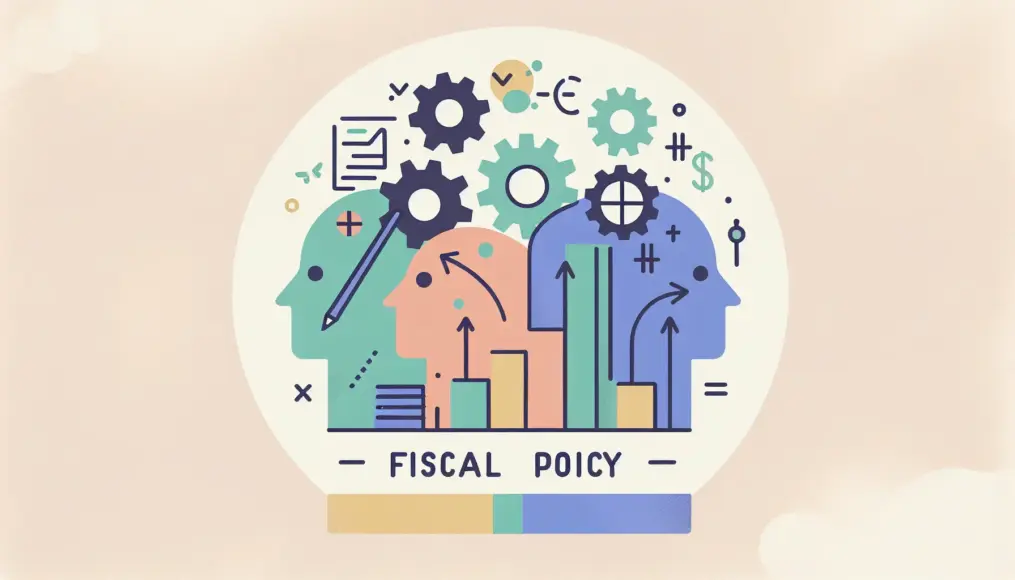Fiscal reconstruction is a critical process aimed at improving the financial health of a nation or region, ultimately leading to sustainable economic growth. In recent years, there has been a growing recognition that a sound fiscal situation is directly linked to economic stability. In this article, we will delve into the fundamental concepts of fiscal reconstruction, its necessity, and the steps required for success.
While there are many challenges associated with fiscal reconstruction, finding concrete solutions can pave the way for a brighter future. Let’s explore together how we can effectively advance fiscal reconstruction.
- Grasp the fundamental concepts and objectives of fiscal reconstruction
- Learn effective processes based on successful case studies
- Discover specific strategies and resources for tackling challenges
Understanding Fiscal Reconstruction: The Basics
You might have come across the term “fiscal reconstruction,” but what does it actually mean? Fiscal reconstruction refers to efforts aimed at improving the financial situation of a country or local government to achieve a sustainable economy. This process goes beyond just revising budgets; it’s a crucial step toward enhancing economic stability. Let’s delve into the definition and objectives of fiscal reconstruction.
Definition and Objectives of Fiscal Reconstruction
Fiscal reconstruction encompasses policies and measures aimed at achieving financial soundness. When a nation or region finds itself in a precarious financial situation, fiscal reconstruction serves as a tool for recovery. This could involve strategies like cutting unnecessary expenditures and increasing revenue through various means. The ultimate goal is to ensure the sustainability of finances while promoting economic growth.
The need for fiscal reconstruction arises from fluctuations in the economy and changes in social conditions. Factors such as economic downturns and an aging population can place considerable pressure on public finances. As a result, fiscal reconstruction has become a significant challenge for many countries and regions.
- Fiscal reconstruction aims for financial soundness
- Cutting unnecessary spending and increasing revenue are crucial
- Economic fluctuations and social changes are key factors
Why Is Fiscal Reconstruction Necessary?
There are several reasons why fiscal reconstruction is essential, with the primary one being the need to maintain a sustainable economy. A sound financial situation enables countries or regions to provide stable services and achieve economic growth more easily. Conversely, if finances are in disarray, it can adversely affect citizens’ lives.
Moreover, maintaining international credibility is also a critical reason for pursuing fiscal reconstruction. A healthy financial status is a key factor in attracting foreign investments. Therefore, it’s fair to say that fiscal reconstruction is an important strategy for securing the future of a nation.
- Necessary for maintaining a sustainable economy
- Unhealthy finances can negatively impact citizens’ lives
- A vital strategy for maintaining international credibility
The Process and Steps of Fiscal Reconstruction
Fiscal reconstruction is not just about cutting costs; it’s a crucial process that needs to be approached with careful planning. This journey involves well-defined steps, each representing a significant stride toward restoring fiscal health. In this article, we’ll discuss the fundamental steps for effective fiscal reconstruction and insights we can glean from successful examples around the world.
Fundamental Steps for Effective Fiscal Reconstruction
To embark on a successful fiscal reconstruction, it’s essential to start with a clear understanding of the current situation. Analyzing the financial landscape thoroughly helps identify problem areas. Following this, you can develop specific strategies for improvement and put them into action. By proceeding in this planned manner, it becomes possible to eliminate waste and efficiently rebuild the financial structure.
Moreover, communication plays a key role throughout the reconstruction process. Sharing information with stakeholders and institutions, and gaining their cooperation, can facilitate a smoother implementation. Engaging local residents to secure their understanding and support can significantly enhance the effectiveness of the reconstruction efforts.
- Starting with a clear understanding of the current situation is vital
- Develop and implement specific improvement strategies
- Smooth communication aids in efficient progress
Learning from Successful Examples Worldwide
Several countries have successfully navigated fiscal reconstruction. For instance, one country reassessed its budgetary waste and successfully reduced expenditures. This led to an improvement in national credit, which in turn spurred economic growth. In another instance, a country managed to increase its revenue through tax reform, achieving greater fiscal stability.
What we can learn from these success stories is the importance of flexible thinking and strategic execution. Each nation has adopted approaches tailored to their unique circumstances, leading to their success. As we reflect on these examples, let’s also explore our own path toward fiscal reconstruction.

If you found this article interesting, you might also enjoy our piece on “What is Fiscal Reconstruction? Exploring the Challenges and Solutions Japan Faces!.” This article delves into specific methods for Japan’s fiscal reconstruction, highlighting past successes and current challenges, so be sure to check it out!
- Reassessing waste is key to success
- Tax reforms can also boost revenue
- Flexible thinking and strategic execution are crucial
Challenges and Solutions in Fiscal Reconstruction
When it comes to advancing fiscal reconstruction, encountering various challenges is inevitable. These challenges can hinder efforts to achieve fiscal health, but with the right measures in place, they can be effectively addressed. Let’s take a closer look at the main obstacles in fiscal reconstruction and the specific solutions to tackle them.
Key Challenges Faced
The fiscal reconstruction process is fraught with a variety of challenges. One of the most common issues is a lack of transparency in financial matters. Often, the public finds it difficult to grasp the true state of finances, which can lead to a lack of support for reconstruction initiatives.
Another significant barrier is political pressure. Policies aimed at fiscal reconstruction can become influenced by short-term gains and popularity contests, making implementation challenging. In such situations, there’s a genuine concern that long-term strategies may be sidelined.
- Lack of transparency in finances
- Political pressure as a barrier to implementation
- Short-term gains hindering long-term strategies
Concrete Strategies for Overcoming Challenges
To tackle these challenges, the first step is to enhance transparency in information. By clearly conveying the financial situation, it becomes easier to deepen the understanding of the general public and stakeholders, making it more likely to gain their cooperation. Additionally, regular financial reporting can help build trust within the community.
Next, to counter political pressures, it’s crucial to develop plans with a long-term perspective. By focusing on sustainable growth rather than being swayed by immediate profits, the chances of successfully achieving fiscal reconstruction increase significantly. Thus, a flexible and well-planned approach is essential.
- Enhance transparency in information
- Build trust through regular financial reporting
- Develop plans with a long-term perspective
Resources and Tools for Achieving Fiscal Reconstruction
Successfully navigating fiscal reconstruction relies heavily on utilizing solid resources and support. By leveraging the right tools, you can methodically reshape your finances, making the implementation process smoother. In this article, we’ll explore various resources, support organizations, and handy tools or apps that can assist in your fiscal recovery journey.
Available Resources and Support Organizations
When it comes to fiscal reconstruction, there are numerous support organizations at your disposal. Government and local agencies provide valuable fiscal data and insights into policies. Additionally, specialized consultants and organizations offer essential advice for planning and executing your fiscal recovery strategy.
Research findings and reports from academic institutions and research bodies can also be extremely beneficial. By tapping into this information, you can draw inspiration from successful examples in other regions or countries, helping you craft a tailored reconstruction plan that suits your needs.
- Leverage information from government and local agencies
- Seek advice from specialized consultants
- Refer to research findings from academic institutions
Tools and Apps Helpful for Fiscal Reconstruction
Recently, a variety of handy tools and apps have emerged to support fiscal reconstruction. For instance, budgeting apps help visualize your income and expenses, assisting in reducing unnecessary spending. This clarity allows you to see exactly where your money is going, enabling effective adjustments.
Data analysis tools can also be invaluable. By analyzing fiscal data, you can easily determine which strategies are yielding results. Utilizing these tools empowers you to proceed with your fiscal reconstruction more efficiently.
- Use budgeting apps to visualize income and expenses
- Analyze the effectiveness of strategies with data analysis tools
- Access convenient tools that support efficient reconstruction
Conclusion
Financial restructuring is a crucial process for maintaining the health of a country’s or region’s economy. In this article, we’ve delved into the fundamental concepts of financial restructuring, its necessity, the specific processes involved, the challenges faced, and potential solutions, as well as useful resources and tools. While the path to financial restructuring is not always straightforward, with the right knowledge and strategies, achieving a sustainable economy is within reach.
As we engage in financial restructuring efforts, it’s essential to leverage information effectively and learn from other successful case studies. Maintaining open communication with local communities and stakeholders is also vital as we navigate this journey together. Let’s work together towards a brighter future in financial restructuring.
- Financial restructuring is a key process for economic health.
- It’s important to utilize information and learn from other success stories.
- A focus on communication with the community is essential.
We encourage you to use this article as a guide to take action towards your own financial restructuring. We’d love to hear your thoughts and feedback in the comments!



Comment